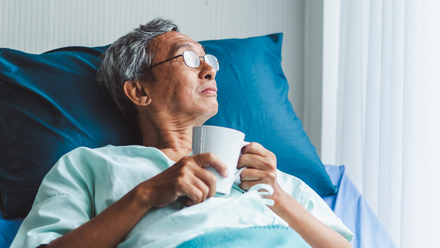The decision making and transfer of critically ill adults to their preferred place of death
“The Decision Making and Transfer of Critically Ill Adults to Their Preferred Place of Death” is designed to support healthcare professionals in navigating one of the most sensitive and important decisions in end-of-life care.
Developed by a multi-professional team from intensive care and palliative medicine, this guidance provides a clear and compassionate framework to help teams consider and facilitate transfers for critically ill patients who express a wish to die in their preferred place - whether at home or another meaningful setting.
This document acknowledges the complexity of such decisions in the critical care environment, where time pressures, clinical uncertainty, and resource limitations are daily realities. Yet even within these constraints, patients’ wishes at the end of life matter deeply. The guidance offers practical tools, clinical considerations, and multidisciplinary recommendations to help teams explore what matters most to patients and families - and to act wherever possible to honour those wishes.
“We hope this guidance empowers clinicians to engage meaningfully with patients and families, supporting compassionate, dignified deaths wherever possible. With practical tools, risk assessment advice, and multidisciplinary recommendations, we have aimed to help teams explore what matters most to patients and deliver care that honours their wishes.”
Society President, Professor Shondipon Laha, added: “At the end of life, what matters most to patients and their families must help to guide our care. This guidance recognises the complexity of critical care, but also the profound importance of dignity, compassion, and personal choice in a person’s final days. We hope it equips teams to have honest, thoughtful conversations - and to support transfers home or to a preferred place of death wherever possible.”
By placing patient values and dignity at the heart of end-of-life care, this guidance aims to support clinicians in making decisions that are not only clinically sound, but consider these unique circumstances.
The Guidance has been endorsed by Marie Curie and UKCCNA and supported by the College of Paramedics.



